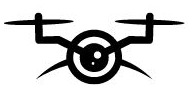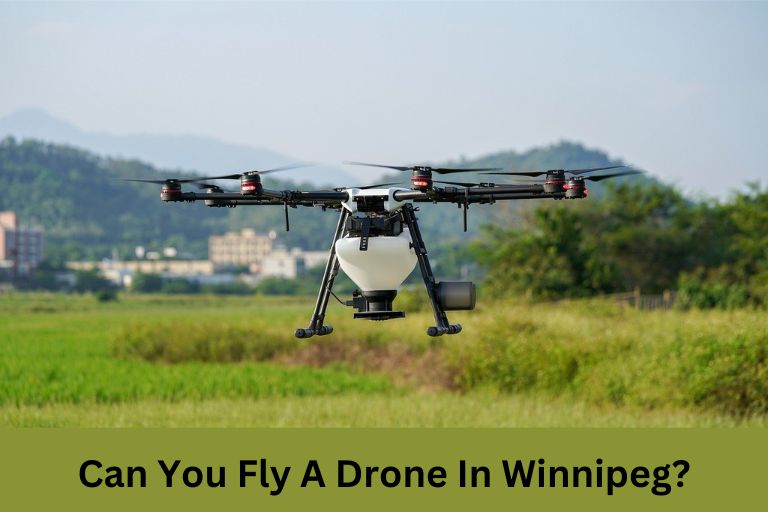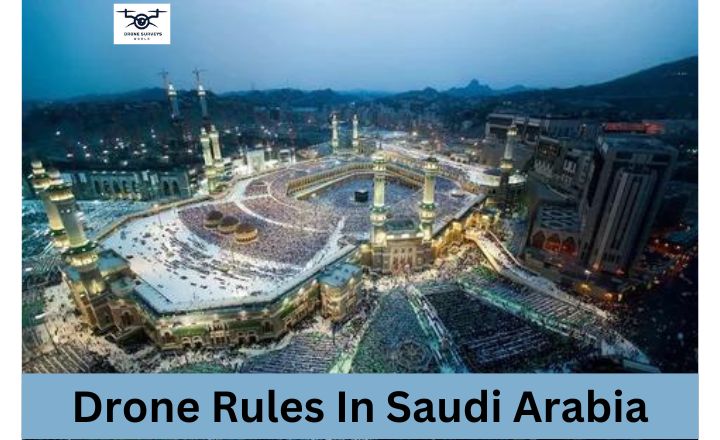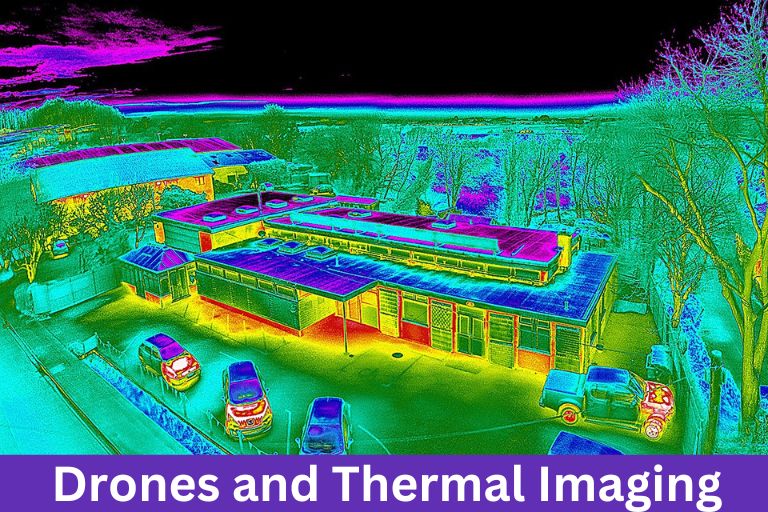If you want to fly a drone in Winnipeg, there are rules to follow. You need to know about air regulations, privacy, and local laws. Let’s explore flying drones in Winnipeg and learn how to do it right.
Where You Can’t Fly A Drone In Winnipeg
Let’s talk about where you can’t fly a drone and where there are strict limits in Winnipeg to help you plan your drone operations safely.
Indoor Environments
Flying a drone indoors can be dangerous because there is a higher risk of causing harm or damaging property. Flying a drone indoors on your property is safer, but you should still be cautious. Flying a drone indoors on someone else’s property without permission is dangerous and illegal.
To avoid accidents and legal issues, always prioritize safety and follow the rules for drone flying locations. In Winnipeg, strict rules govern drone use, so it is essential to know the restrictions on indoor flying to protect property and comply with the law. Understanding these limits can help you operate drones responsibly and avoid accidents.

Advertised Events
Sporting events and outdoor concerts are exciting and draw big crowds. They are advertised widely to create excitement and bring people together. Drone operators must follow the rules and get permission before flying drones at these events. In Winnipeg, it is important not to fly drones during events to keep everyone safe.
Authorities make sure that drones don’t cause problems by requiring a Special Flight Operations Certificate. It is important to balance the fun of events with using drones responsibly as technology becomes more common.
Emergency sites
Drones can help during emergencies by providing aerial support, but they can also create challenges for emergency responders. It is important to know where drones cannot fly in Winnipeg during emergencies, like traffic accidents, where quick response is crucial for safety.
Understanding the limits of using drones in emergencies is vital for protecting people and respecting the work of first responders. Drone technology can improve disaster responses, using them responsibly is essential. Knowing where drones are not allowed during emergencies in Winnipeg and other places is a small but essential step in improving how we handle critical situations.
National and provincial parks
Flying drones over Winnipeg’s parks is restricted to protect wildlife and maintain a peaceful environment. Parks like Duff Roblin and Memorial Provincial Park in Winnipeg have no-fly zones for drones. St. Norbert Provincial Heritage Park and Upper Fort Garry Heritage Provincial Park are also off-limits.
Trappist Monastery Provincial Park, Bakers Narrows Provincial and National Park are areas where drone flying is banned to safeguard plants and animals. Plan your drone flights in Winnipeg carefully to avoid these restricted areas and follow the rules while enjoying the city’s beautiful scenery.
Aerodromes, heliports, water airports, and airports
Transport Canada has strict rules for flying drones near airports in Winnipeg. Drones are not allowed close to heliports or airports to ensure aviation safety. You must have a Special Flight Operations Certificate to fly in these areas. Richardson International Airport in Winnipeg is vital for regional air travel, so obeying the rules to maintain safe airspace is crucial.
Flying drones near airports involves understanding the rules and responsibilities. Winnipeg Airports Authority provides a map of restricted areas around the airport. Adhering to these rules is essential for safety and responsible flying. Balancing drone technology with aviation regulations in today’s evolving airspace is important.
Winnipeg Drone Usage Laws To Know
Here we will focus on Transport Canada drone laws for flying drones in Winnipeg and other areas.
Do Not Fly Your Drone More Than 122 Meters From The Ground
Following Transport Canada’s rules is important when flying your drone in Winnipeg. An essential rule is not to go higher than 122 meters. This rule is about safety and avoiding accidents with planes.
As a responsible drone pilot, you must stay below this limit. By following this rule, you help make the skies safer for everyone. Remember to keep this altitude limit in mind whenever you fly your drone in Winnipeg or anywhere else in Canada.
Avoid Vehicles And People
When drone surveying Winnipeg, following the rules to keep people safe and maintain privacy is important. Drones weighing less than one kilogram should stay 50 meters away from people, while heavier drones should be at least 75 meters away from crowds. Breaking these rules can lead to fines, from $3,000 for individuals to $15,000 for companies.
Following these distances meets Transport Canada’s regulations and shows responsible drone use in Winnipeg. These laws help prevent accidents and privacy issues when drones get too close to people or vehicles. By obeying these rules, drone operators help create a safer and more peaceful relationship between drones and the city’s residents, promoting respect and responsibility for drone use in Winnipeg.

Your Drone Must Stay In Your Line Of Sight
Drones Winnipeg laws require you to always keep your drone within sight. This rule is essential for the safety and proper control of your drone. Going beyond the 500-meter limit increases risks, so it’s crucial to stay vigilant and keep your drone in sight.
Following this rule is a legal requirement and helps you fly your drone responsibly. Keeping your drone in sight allows you to anticipate and avoid obstacles during flight, making it safer and more enjoyable. Following VLOS regulations is essential for responsible drone use in Winnipeg. Prioritizing safety, visibility, and control helps drone operators fly confidently while protecting public safety and airspace.
Only Use Your Drone During Daylight Hours
Flying a drone in Winnipeg during the day offers many opportunities to capture beautiful aerial footage. The colors, light, and city scenery all look amazing in the sunlight. By following daytime drone rules, you can be compliant and creative.
The dusk and dawn may seem good for photos, you need permission to fly during these times. Exploring Winnipeg during the day can be just as rewarding. Improve your skills by learning daytime photography techniques.
Following Winnipeg drone laws, prohibiting flying after dark, promotes safety and responsibility. This rule can enhance creativity and help you discover beauty in unexpected places during the day. Remember, limits can sometimes provide a new perspective.
It Would Help If You Marked Your Drone
Pilots must follow Transport Canada’s rules as drone use becomes more widespread. Even if you’re not in Canada, you must put your name and address on your drone to avoid fines. It is important to follow the rules no matter where you are to fly responsibly.
In Winnipeg, knowing the drone laws is important for all pilots. By marking your drone as Transport Canada requires, you can avoid fines and promote safety in the drone community. Following these rules is crucial as drone technology advances and more drones are in the sky.
You Must Have Drone Insurance
In Canada, especially in cities like Winnipeg, it’s vital to follow drone rules. Transport Canada requires drone operators to have liability insurance. This insurance covers up to $100,000 CAD for each incident and $300,000 CAD for injuries or deaths caused by drones.
Having insurance is essential for accountability and financial protection. It shows responsible behavior and meets legal requirements. Not having insurance can lead to severe consequences. Getting insurance before flying a drone in Canada is a proactive step promoting drone industry safety.
While it may seem like an extra cost, having drone insurance is necessary for safer skies and a more professional drone community. Following these rules protects people financially and supports innovation and exploration with drones in Canada.
You must have an operator certificate
As a drone operator Winnipeg, it is important to know and follow the drone laws Canada. Getting an operator certificate is necessary for safe flying. This certificate shows you are a skilled pilot and helps keep the airspace safe.
It is valid for five years, and you must follow rules on which drones to use and how far you can fly. These rules may seem restrictive, but are essential for safety and privacy. By obeying these rules, you help keep both aircraft and people safe.
Learning Winnipeg’s drone laws lets you enjoy your hobby responsibly and follow aviation rules. Following these laws protects others and ensures drone flying can continue in Winnipeg.
You Must Register Your Drone
Canada has strict rules for flying drones in Winnipeg. To avoid fines, follow Transport Canada’s registration requirements. Individuals can be fined up to $1,000 CAD, and corporations up to $5,000 CAD for flying unregistered drones.
The Drone Management Portal makes registering and transferring ownership of drones easy. Transport Canada aims to simplify the rules for drone owners to cooperate with authorities. When registering a drone, provide details like purchase date, weight, make and model, and serial number.
This helps track drone use and promotes safety in the drone industry. All drones weighing 250 grams and 25 kilograms must be registered, regardless of origin. This standard framework ensures oversight and responsibility for all drones in Canadian airspace.
Conclusion
Transport Canada and the City set rules for flying a drone in Winnipeg. Can you fly a drone in Winnipeg? Drone operators must know these rules for safety and legality. Get permits and follow guidelines to capture incredible views. Prioritize safety, respect privacy, and avoid no-fly zones to prevent accidents or legal problems. Fly responsibly and explore Winnipeg’s skies carefully.
Frequently Asked Questions
Do you know about Drone Rules Canada?
In Canada, there are rules for using drones. Transport Canada enforces these rules for both recreational and commercial drone users. Key regulations include getting a Special Flight Operations Certificate for commercial use, flying within sight, and following privacy laws when taking photos or videos.
Write about Ontario Lrone laws?
In Ontario, drone operators must follow Transport Canada’s rules. This includes registering your drone, passing a knowledge test, and getting a Pilot Certificate for Basic Operations. Drones must be flown within sight, below 400 feet, and at least 30 meters away from vehicles, boats, and people.
Can I Fly a Drone in Manitoba Without any Restrictions?
No, there are specific Manitoba drone laws and regulations that govern the use of drones.





